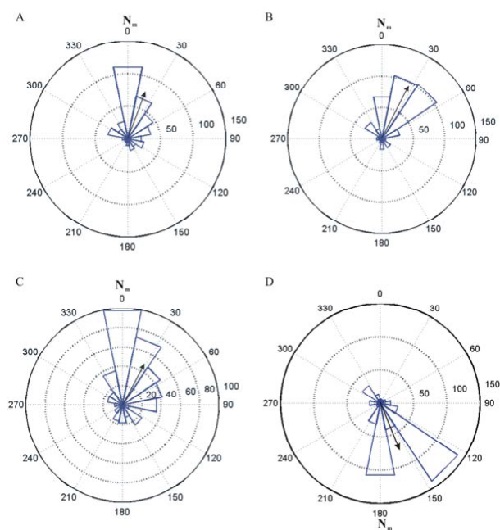
The geomagnetic field is one of the most important of Earth’s geophysical fields: All organisms living on Earth have evolved in the geomagnetic field. The geomagnetic field can protect Earth’s organisms from the solar wind and other harmful cosmic rays, which is crucial to the survival of life. In addition, the geomagnetic field intensity, declination and inclination can also provide navigational reference information for migratory animals during their migration and foraging. The influences of the geomagnetic field and its changes on animal geomagnetic orientation and navigation are the main research topics of Biogeomagnetism. Paleomagnetic studies have shown that the dipolar field intensity may drop to 10-20% during geomagnetic polarity reversals or geomagnetic excursions. Hence, such dramatic changes of the strength and direction of the geomagnetic field may pose a significant challenge for the evolution of any magnetic orientation in organisms.
Previous behavioral data strongly suggest that bats use a magnetic compass for orientation (during migration as well as while roosting). Since bats originated in Laurasia in the early Eocene (52–50 Ma), bats have experienced tens to hundreds of geomagnetic polarity reversals and geomagnetic excursions. Since the last Brunhes-Matuyama reversal at 780 ka B.P., there were more than ten geomagnetic excursions. Hence, the question emerges if bats (and other mammals) could have responded to the changes of the geomagnetic field in the past (and if they will be able to do so in the future).
Dr. TIAN Lanxiang and Prof. PAN Yongxin at the Institute of Geology and Geophysics, in cooperation with other co-authors, experimentally tested whether the Chinese Noctule, Nyctalus plancyi (Vespertilionidae) can sense magnetic field strengths that were even lower than those of the present-day geomagnetic field. Such field strengths are analogous to those that occurred during geomagnetic excursions or polarity reversals and thus may have played an important role in the evolution of a magnetic sense. They found that in a present-day local geomagnetic field, the bats showed a clear preference for positioning themselves towards magnetic north (Fig 1).
As the field intensity decreased to only 1/5th of the natural intensity (i.e., 10 μT; the lowest field strength tested here), the bats still responded by positioning themselves towards magnetic north. When the field polarity was artificially reversed, the bats still preferred the new magnetic north, even at the lowest field strength tested (10 μT), despite the fact that the artificial field orientation was opposite to the natural geomagnetic field (P<0.05) (Fig 2).
Hence, N. plancyi is able to detect the direction of a magnetic field even at 1/5th of the present-day field strength. This high sensitivity to magnetic fields may explain how magnetic orientation could have evolved in bats even as Earth’s magnetic field strength varied and the polarity reversed tens of times over the past fifty million years.
These results were recently publishing in PloS ONE (Tian et al. 2015, Bats respond to very weak magnetic fields. PLoS One. 10 (4): e0123205. doi:10.1371/journal.pone.0123205).

Fig 1. Angular histograms of roosting locations in the natural geomagnetic field (A) and a polarity reversed magnetic field (B). Field intensity is 51μT. Black arrows indicate the direction and magnitude of the mean resultant vector. Nm: magnetic north. (Image by IGGCAS)

Fig 2. Angular histograms of roosting locations in different magnetic field strengths and in reversed polarity at the weakest field strength. (A) 1/3rd of natural field strength. (B) 1/4th of natural field strength. (C) 1/5th of natural field strength. (D) Reversed polarity of a magnetic field with 1/5th of natural field strength. N : magnetic north. (Image by IGGCAS)
Contact:
Prof. TIAN Lanxiang
Biogeomagnetism Group, PGL, Key Laboratory of Earth and Planetary Physics, Institute of Geology and Geophysics
E-mail: tianlx@mail.iggcas.ac.cn

86-10-68597521 (day)
86-10-68597289 (night)

86-10-68511095 (day)
86-10-68512458 (night)

cas_en@cas.cn

52 Sanlihe Rd., Xicheng District,
Beijing, China (100864)

